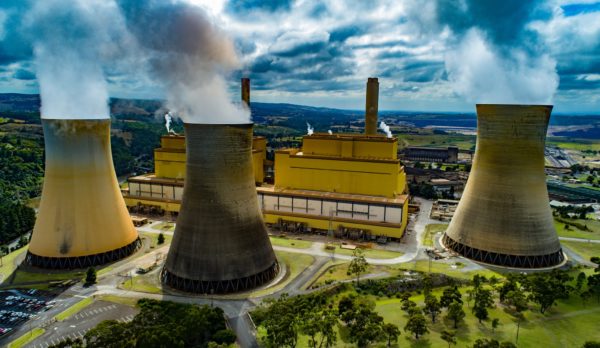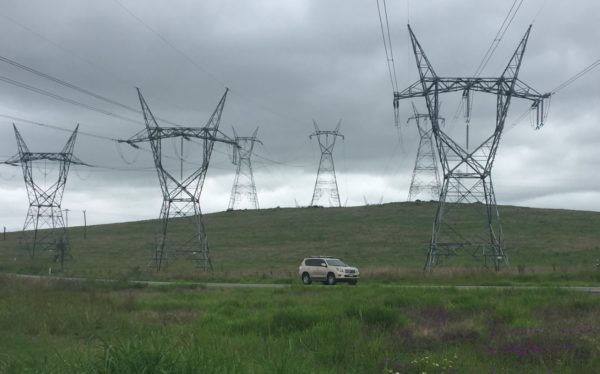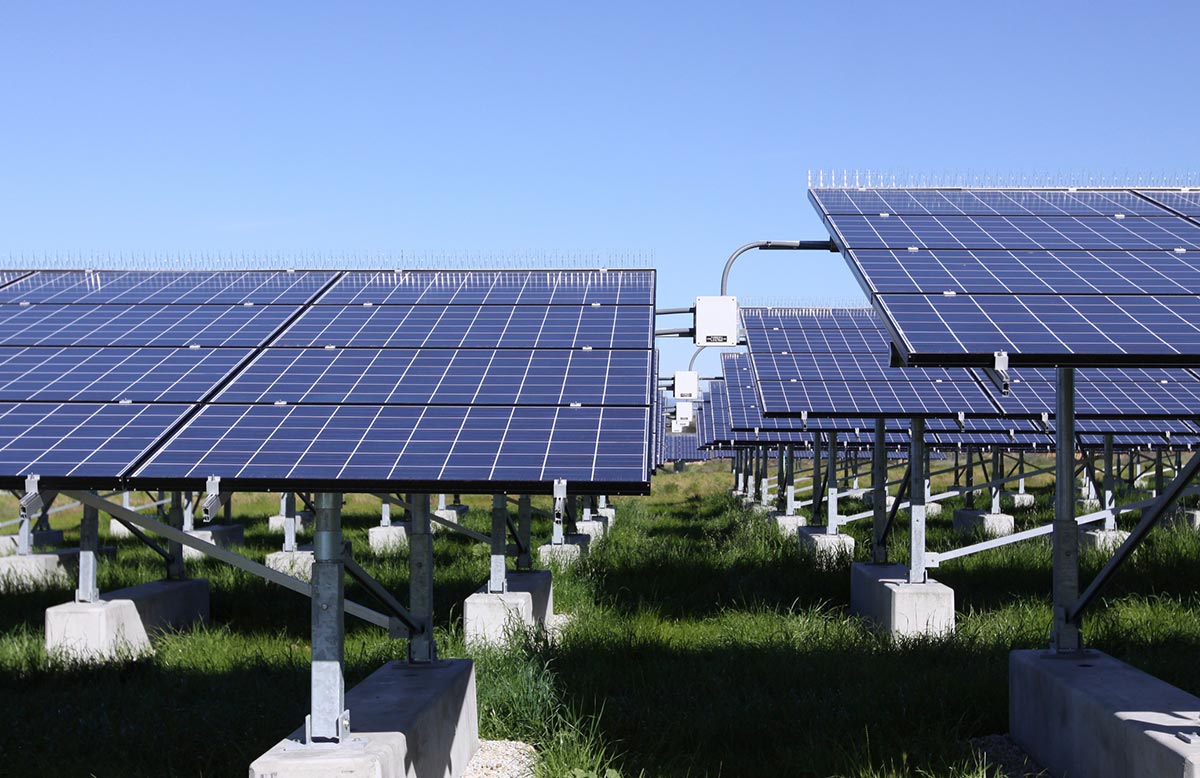The Australian Energy Market Operator (AEMO) has forecast utility-scale variable renewable energy (VER) capacity in the National Electricity Market (NEM) will increase nine-fold by 2050 while smaller scale distributed energy resources (DER) will grow five-fold as electricity demand soars and coal-fired generation withdraws.
AEMO today published its Draft 2022 Integrated System Plan (ISP), outlining five scenarios encompassing a range of plausible trends and events in the energy sector’s transformation and proposing a 30-year ‘optimal development path’ for the efficient development of the NEM.
The favoured Step Change scenario forecasts a rapid consumer-led transformation of the energy sector with major investment in renewable generation, energy storage, back-up generation and transmission with coal-fired power generators expected to shut down nearly three times faster than previously anticipated, exiting the NEM entirely by 2043.
AEMO chief executive Daniel Westerman said the significant changes already underway in the NEM have continued to accelerate in recent years, considerably exceeding forecasts in the Central scenario which was favoured in the 2020 ISP.
“The Step Change scenario forecasts a rapid transformation in Australia’s National Electricity Market, consisting of a significant investment in renewable generation, storage and firming generation as coal plants exit, and improvements to transmission,” he said.
“In this scenario, the NEM will operate without coal generation by 2043. This requires a substantial increase in battery and pumped-hydro storage, hydrogen or gas-fired generation for peak demand, all complemented by a market that incentivises energy users to adjust demand based on system conditions.”
Under the Step Change scenario, the amount of energy delivered to customers in the NEM will nearly double by 2050, up from 180 TWh to about 330 TWh per year as transport, heating, cooking and industrial processes are electrified. This energy will be delivered almost solely by renewables with large-scale wind and solar capacity projected to triple by 2030.
The ISP forecasts that utility-scale VRE capacity will increase from 15 GW currently to nearly 140 GW by 2050 to meet demand as coal-fired generation withdraws.
Current announcements by thermal plant owners suggest that about 5 GW of the current 23 GW of coal capacity will withdraw by 2030. However, modelling suggests that 14 GW of coal generation is likely to leave the market by the end of the decade. AEMO anticipates coal capacity is likely to close as early as 2040 and the NEM will operate without it by 2043.

Image: Energy Australia
“Over the past decade, coal-fired generators have withdrawn from the market before their announced dates, and competitive and operational pressures will intensify with the ever-increasing penetration of cheap renewable generation,” AEMO said.
The Step Change scenario modelling suggest that nearly half of all Australian homes will have rooftop PV by 2030, rising to 65% with 69 GW capacity by 2050, with most systems coupled with battery energy storage. These units would produce approximately 90 GWh of electricity, satisfying nearly 20% of the NEM’s total demand.
To firm that VRE and DER, major investment in storage will be required, with 45 GW/620 GWh of dispatchable generation, including utility-scale batteries, hydro storage, and smart behind-the-meter batteries or “virtual power plants” (VPPs) needed.
Networks and markets will also need to be adapted for two-way electricity flow and to provide essential power system assets and services with more than 10,000 km of new transmission required to connect geographically and technologically diverse, low-cost generation and firming with the consumers who rely on it.
Westerman said the changes anticipated in the draft plan would deliver “secure, reliable and affordable electricity” while also reducing emissions, but warned there would need to be a co-operative approach.
“It is essential that communities, governments and industry collaborate to meet the aspirations of consumers and the communities that will host new infrastructure,” he said.
AEMO said the enabling the NEM transition is forecast to deliver $29 billion in net market benefits, returning 2.5 times the investment value.

Image: David Carroll
Clean Energy Council (CEC) chief executive officer Kane Thornton said it was apparent that significant investment will be required to make the transition happen safely and smoothly.
“Already, we have seen the most ambitious, aggressive forecasts from the previous ISP becoming the base case. It’s happening now, and it’s happening fast,” he said. “So, this is not about what we might achieve by 2050. The focus needs to be very much on what needs to be done this decade.
“This Draft 2022 ISP is a call to arms that we must leave no stone unturned in getting the renewable energy transition done right and getting it done fast.”
The ISP is published biennially but AEMO said over the past four years the NEM’s transformation has outpaced this cycle.
AEMO said VRE and rooftop PV development is accelerating faster than assumed likely in the previous ISP, and new technology and business models are driving consumer adoption faster than anticipated.
In the past two years, despite the challenges triggered by the Covid-19 pandemic, VRE development has accelerated with 40% more large-scale renewable now committed or anticipated to be connected to the grid by 2023-24 than was forecast in the 2020 ISP.
By May 2021, a surge of renewable generation set a record, delivering 57% of the total generation in the NEM for one trading interval. That record rose twice in September 2021, first to 59% and then again to 61%. AEMO now forecasts periods of 100% renewable generation in some periods as early as 2025, across the NEM rather than in significant parts of it.
Modelling for the Draft ISP forecasts that this rate of transformation will continue to accelerate, with state and federal governments announcing significant new policies to support a lower emissions power system.
AEMO’s final plan is expected in June with the market operator planning further consultation “to ensure the final version provides appropriate signals for investment”.
“Without meaningful community consultation, projects will be delayed and become more expensive. Efficient delivery is also critical,” Westerman said.
This content is protected by copyright and may not be reused. If you want to cooperate with us and would like to reuse some of our content, please contact: editors@pv-magazine.com.









1 comment
By submitting this form you agree to pv magazine using your data for the purposes of publishing your comment.
Your personal data will only be disclosed or otherwise transmitted to third parties for the purposes of spam filtering or if this is necessary for technical maintenance of the website. Any other transfer to third parties will not take place unless this is justified on the basis of applicable data protection regulations or if pv magazine is legally obliged to do so.
You may revoke this consent at any time with effect for the future, in which case your personal data will be deleted immediately. Otherwise, your data will be deleted if pv magazine has processed your request or the purpose of data storage is fulfilled.
Further information on data privacy can be found in our Data Protection Policy.